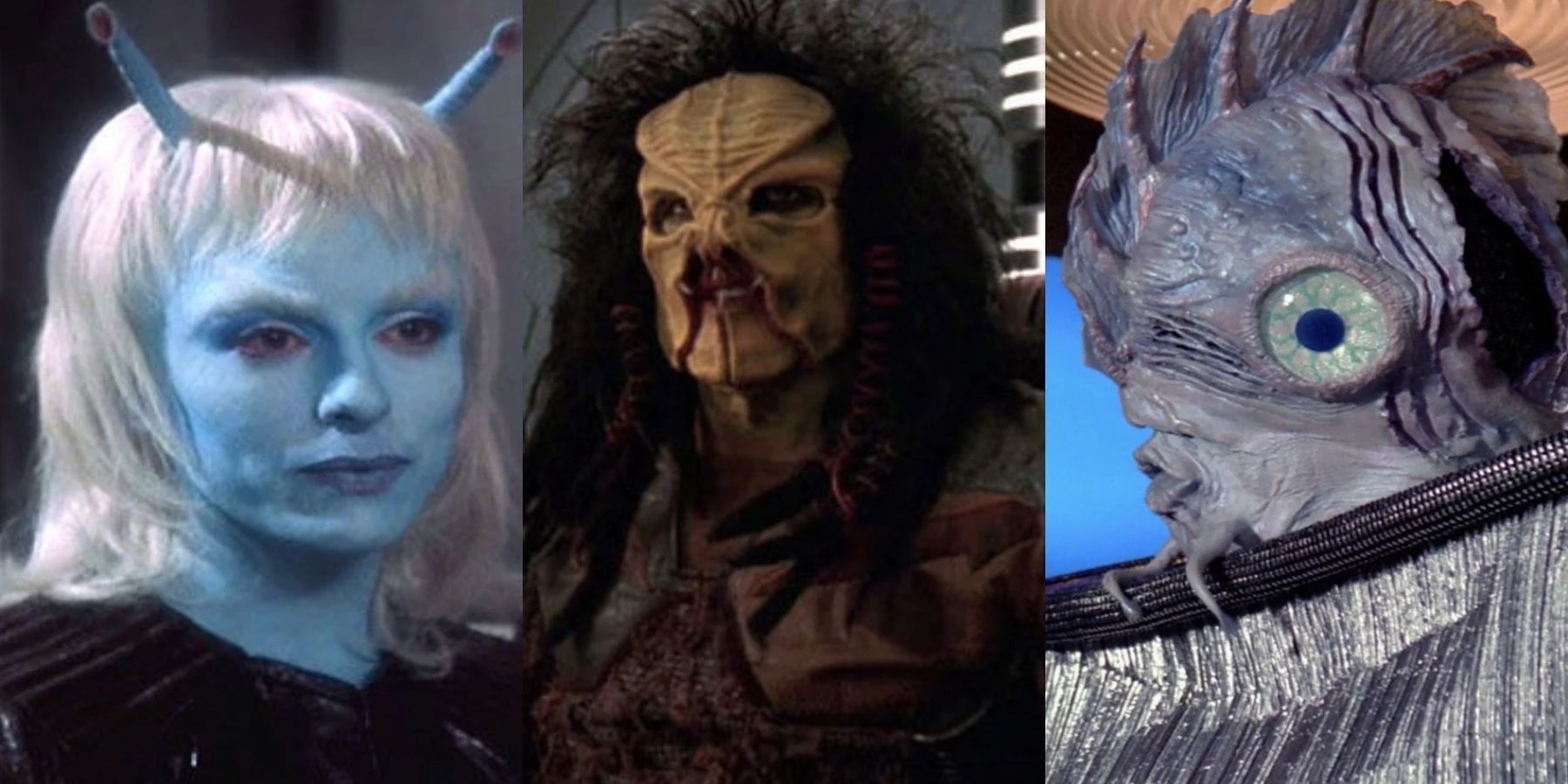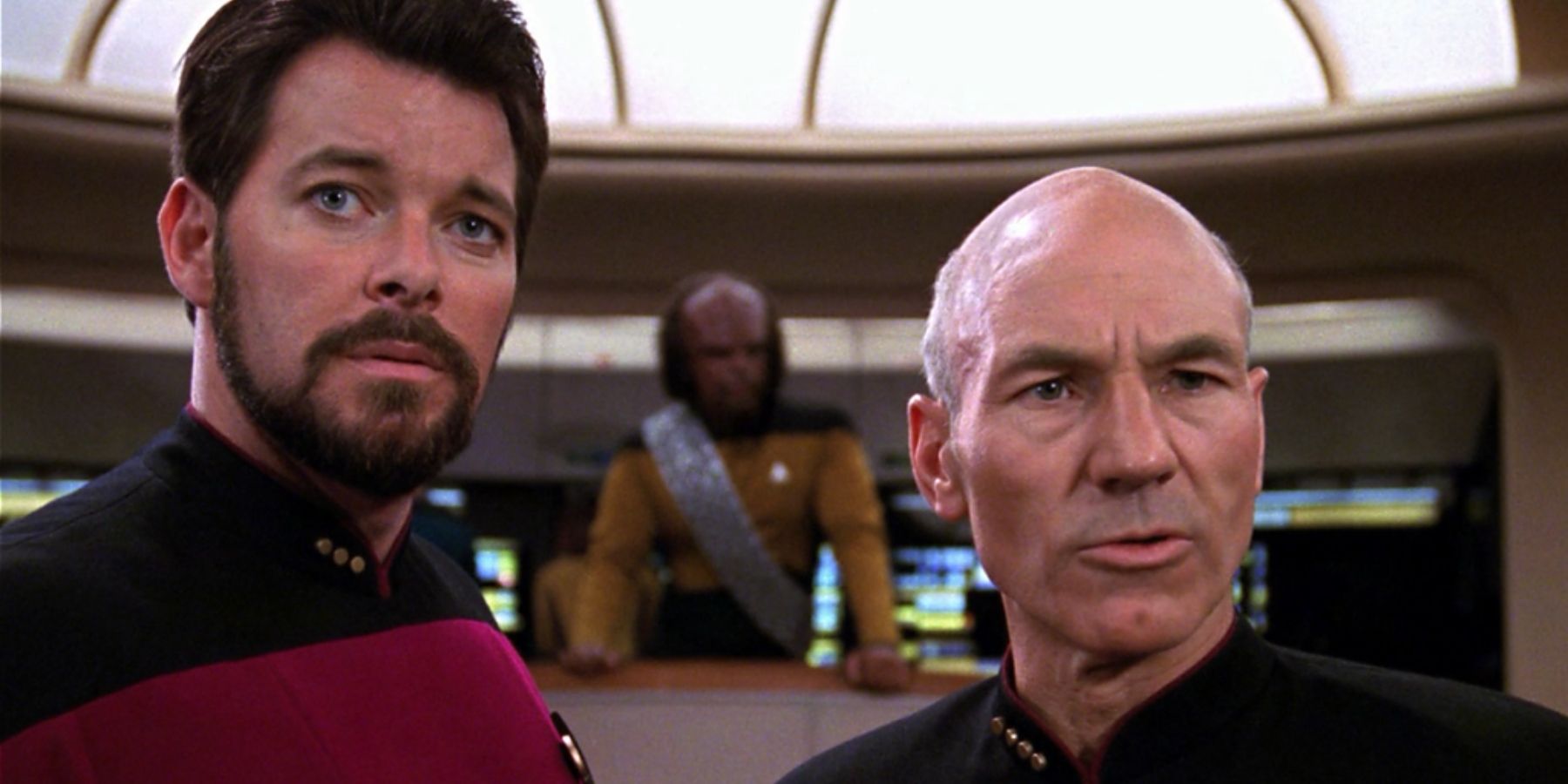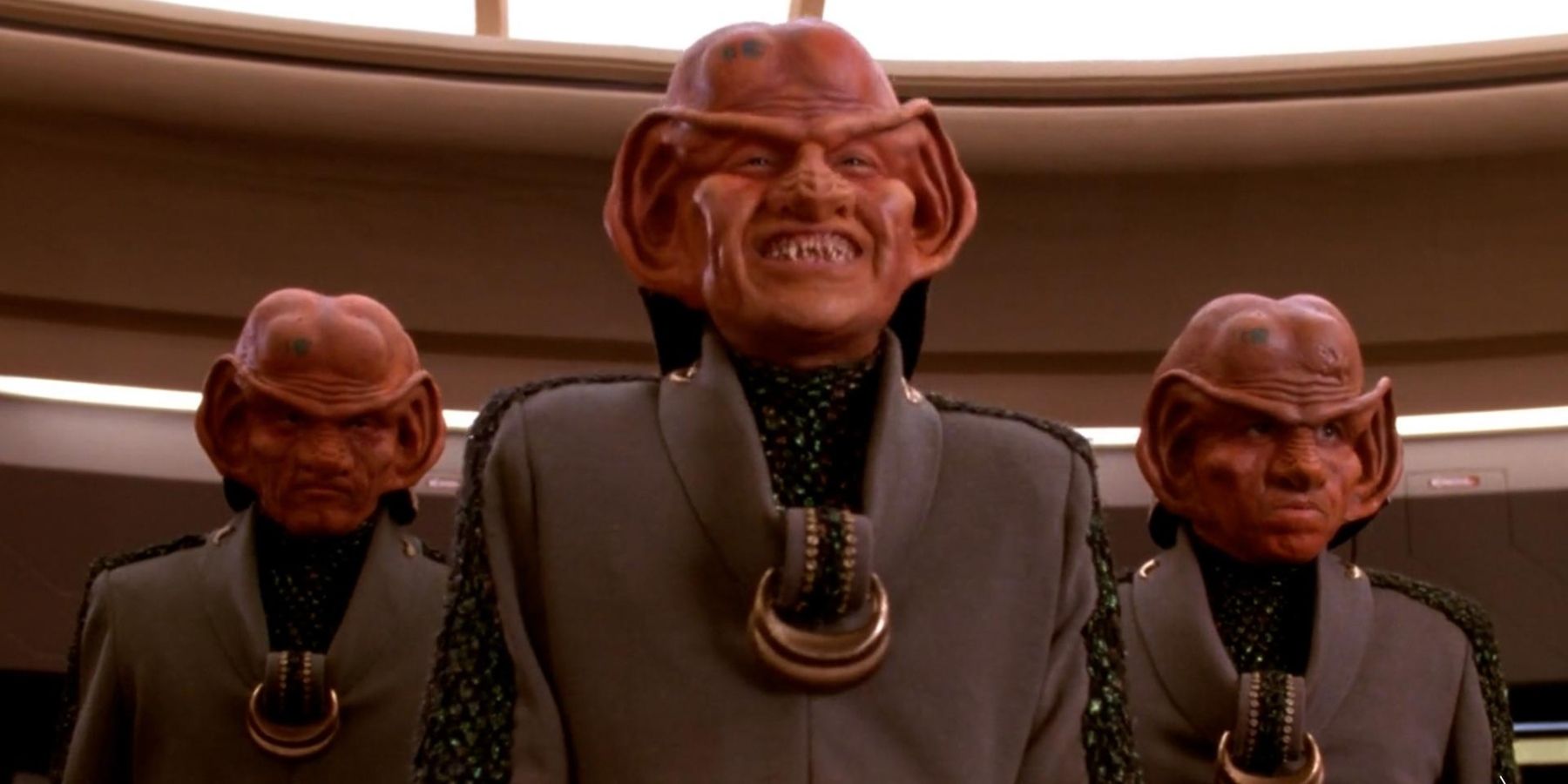There are well over 300 different alien races to grace the Star Trek universe, a list that has grown with every new iteration into the franchise. From the straight-talking Klingons and their battle lust, to the logic-driven favorites the Vulcans, as well as their counterparts the Romulans, each race has intricacies and nuances that bring them to life. However, there is one major problem that holds all of them back.
Humans play a pivotal role within the Star Trek Universe, from commanding officers to (seemingly) the majority voice within the federation. They are often the main protagonists or at least one of the main focuses of the show. This makes sense with human viewership; it makes it easier to relate to the characters on screen when they are the same species. Of course, there has also been a plethora of relatable and much-loved alien characters from the show. Who can forget the stoic and noble Spock, a recurring figure from the Original Series appearing in many of the following shows and series? The large-eared Quark as well, with his wily ways and money-making schemes from Deep Space 9, has a place in people's hearts. They are, however, both key examples of the biggest problem with the representation of alien life.
What makes humans so interesting, and consequently makes them the leading roles within the programs, is that they are made up of a big, jumbled up, complex array of emotions and character traits. That's what makes humans so great: these characters never isolate single feelings; rather, they are made up from a mixture of them all. Picard’s leading character traits are logical and stern, but he is also kind, caring, passionate, and charming. Riker is the same, but his leading emotions are, arguably, passion and romance, charm and charisma. While they actively portray different keystone emotions, they also feel and show the rest of them. It would be hard to define humans by only one or even a few emotions. They are an amalgamation of all of them, good and bad.
The problem then comes when creating alien races, which is not as easy as it is in games like the Sims. Star Trek often tends to use and portray these same human-specific emotions and characteristics. The reason this is such a difficult problem to rectify comes down to the simple fact that it is hard, if not impossible, to come up with emotions that don’t exist, or that are beyond human. Thus, it's incredibly difficult to imagine and create a race that has a completely different emotional/characteristic spectrum, with emotions and feelings undefinable. Simply put, the show wouldn't be able to define these emotions for audiences, at not least in a way that viewers could understand.
Star Trek's solution, then, to create cultures that seem alien, is to first make them look different. Give them some extra arms perhaps, or some funky forehead ridges (they do tend to remain humanoid, something that is explained during The Next Generation). The second thing they can do is to give them the appearance of an alien set of emotional fundamentals, by prioritizing only a select range of emotions or human character traits. While humans are hard to define by one emotion, nearly every other race of recurring, fleshed-out species is characterized, or stereotyped, into one or two human emotions or characteristics. The Klingons represent anger and honor, the Vulcan's logic and intelligence, the Ferengi the consumerism and greed, the Betazoids emotion and empathy, the list goes on.
Of course, this is not to say that members of a given species are incapable of other emotions or cannot portray other characteristics. Worf, a Klingon, shows he is capable of empathy, logic, and emotion, time and time again. However, his portrayal is always within the confines of the same brutish and anger-driven characteristics. Spock, as well as various Vulcans along the way, has fleeting moments where he breaks the wall of logic and gives into emotion throughout the franchise. But still, their race remains stereotyped into one small aspect of the vast range of elements that make humans human.
This alone is not necessarily a problem, and is really one of the few solutions to being able to depict something that is alien, but not too alien to understand. However, it becomes a problem when said stereotypes clash with existing discriminatory stereotypes, whether this happens by accident or on purpose. Taking into account the founding fundamentals of Star Trek, with Gene Roddenberry striving to create a culturally diverse and accepting universe, it’s hard to imagine any of this was done on purpose — but that’s the problem when dealing with stereotypes. The biggest example is the Ferengi, an accidental anti-Semitic portrayal channeling discrimination stereotypes with exaggerated facial features and obsession with money and greed. Though the parallel may be unintentional, there are strong similarities to derogatory opinions of Jewish people. It has also been noted that the animal-like Klingons were based loosely on pre-WWII Japanese, and the Romulans were based on Soviets, bringing forth unflattering stereotypes of each.
At the end of the day, there is little harm in the way Star Trek decides to portray alien races. Rather, it is more a problem of the aliens never really feeling alien enough. This is, of course, most of the time, a good thing. It allows audiences to relate and engage with the emotional spectrum portrayed in a way that is easy to understand. Films that depict alien species as truly alien, and thus incomprehensible, take away from the ease of just including them as characters in a plot. Arrival does this very well, portraying aliens that are truly alien, with a completely different form of communication and emotional/ characteristic spectrum. Consequently, the entire film revolves in working out how to understand them — and even at the end it, would be hard to find an audience member who could relate to them.
If Star Trek were to take this approach with every alien that the franchise's space-faring crews were to stumble upon things would quickly get out of hand, and the show would simply fall apart under its own weight. The problem then, ironically, is also the show's saving grace, making it easy to understand and digest.



